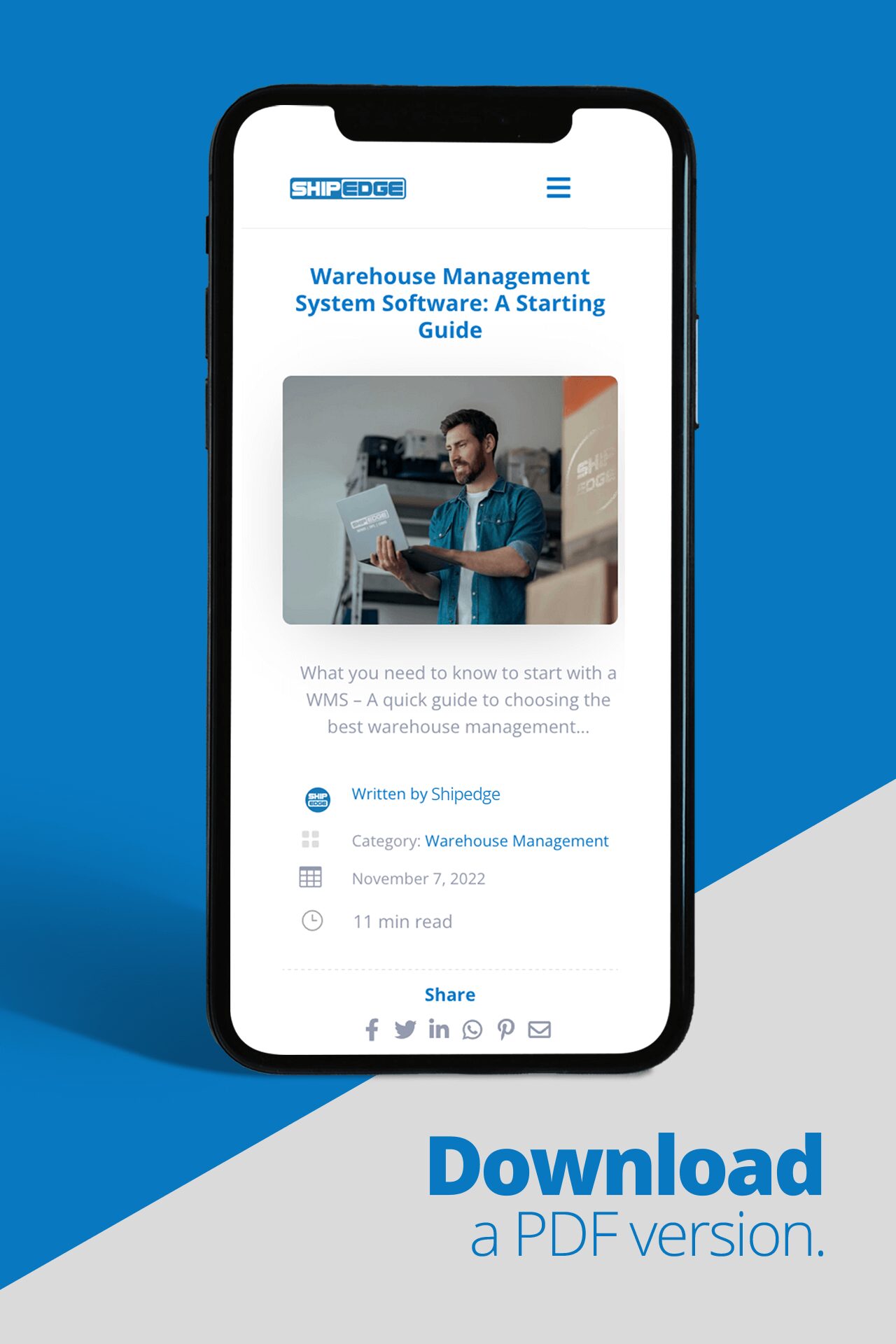If eCommerce is one of the fastest-growing industries in the world, doesn’t that mean fulfillment is too? Apparently, the eCommerce kingpin, Amazon, is asking the same question. Amazon has a long history of disruption and as it moves into delivery we should expect more of the same. As the giant continues to fortify its eCommerce ecosystem, small brands are wondering how to compete with Amazon.
Amazon is prolific in the eCommerce industry, so why are they shifting gears? Who is at risk and who is safe? And if your business is in peril, what can you do?
Why Does Amazon Want to Be a New Carrier?
It’s a numbers game for Amazon. Last year eCommerce took 14.3% of all retail sales and Amazon accounted for 40% of that (5.72%). On the other hand, profits from Amazon’s Third-Party Marketplace surpassed the company’s own online sales in 2017. Today Evercore ISI analysts say the third-party services are double those of online sales. So, despite a formidable grip on the market, it seems the real money is in fulfillment.
Amazon’s entire strategy subsists on the idea that you save time and money buying online. Remember eCommerce in the early days? You’d make a purchase and you’d get the shipment…eventually. Ecommerce was about selection, not convenience. Amazon solved this with logistics and created fulfillment centers near consumers. They built their infrastructure at a loss to dominate the retail market. Now, their network is bought and paid for, so Amazon is looking for new ways to cut costs. As a shipping carrier with a nationwide network, Amazon doesn’t have to pay logistics providers. They can deliver and keep the margins. No matter your business model, if you compete with Amazon, they are looking at your piece of the pie with greedy eyes.
Amazon is Shifting to Logistics
Anytime a pervasive company shifts gears there is bound to be a big splash. While Amazon is notoriously tight-lipped, it’s leaving behind a trail of breadcrumbs.
In its 2018 report, Amazon listed “transportation and logistics services” as a potential competitive risk for the first time. Now it’s trying to build its own, nationwide delivery network. Last year Amazon rolled out a program allowing entrepreneurs to start a delivery hub for just $10,000. In December Amazon announced 10 more cargo jets for its air fleet. It is happening – Amazon is trying to take the logistics world. So, who cares?
Who is at Risk?
So much of eCommerce depends on Amazon that you’ll have a difficult time finding someone that won’t be affected. Amazon can leverage its size and market share to create an ideal environment for its operations. And it’s already happening.
Anyone that competes with Amazon is about to feel the almighty weight of the eCom god. Shipping carriers will lose market share. Etailers may be forced onto Amazon where rates are high and listings are unstable. Amazon is essentially creating an eCommerce and fulfillment magnet. So, any fulfillment provider may lose customers to the Amazon ecosystem.
Cutting Out USPS
In 2012 the United States Postal Service reported a net loss of $15.9 billion on 160 billion shipments. That’s when they signed the deal with Amazon. Over the last 6 years, USPS added Sunday package delivery and 6 million new delivery points. In 2018 USPS had a net loss of $3.9 billion on 146 billion shipments. Ultimately, Amazon’s turbid relationship with USPS seems to be a good thing. But it’s dangerous too.
Amazon is already delivering 40% of its orders. As this percentage increases USPS revenues will decrease while fixed costs stay the same. So, if you compete with Amazon and your business uses the United States Postal Service, you can expect to feel this hit too.
Seller Risk
Recently, Senator Elizabeth Warren and Jurist Lina Khan brought Amazon into the limelight over anti-trust laws. They claim Amazon shouldn’t be in its own marketplace because the giant can undercut pricing and doctor the listings. Imagine trying to compete with Amazon when they get to pick and choose the rules. Moreover, this idea gives way to an interesting and important question. What exactly is Amazon capable of?
Amazon leveraged its success in eCommerce to build a cloud service capable of beating Google, Apple, and Microsoft. Using a similar strategy, Amazon can invade the small parcel delivery space and compete with the giant American duopoly: UPS and FedEx. If Amazon dictates logistics, the market will consolidate. That may mean prices go up while fulfillment flexibility goes down. This may stifle your ability to grow and maintain solid margins.
A Rising Tide Floats All Boats
How do we compete with Amazon, a giant? Well, let’s look at another booming industry. There is a huge craft whiskey movement going on right now. Small brands are successfully squeezing mega-brands off the shelves. How are they doing it?
In the craft industry, you hear the mantra, “A rising tide floats all boats.” It means that craft distillers want to see other small brands succeed. When you buy a craft spirit, the entire craft industry advances. So, it isn’t about each brand, it’s the whole category.
If you want to compete with Amazon, then you have to change the way you think.
If you want to compete with Amazon, then you have to change the way you think. Right now, the fulfillment industry is a mess. It’s like we are a bunch of bees all independently trying to beat a bear to honey. The only way to beat Amazon is to focus on what you do best. Whether that is value-added services, personal touches, or branded boxes. Every time a package arrives with a retailer’s logo instead of Amazon’s it’s a good thing. But it’s not enough. You will need to complement those unique abilities by being part of a “fulfillment network”.

Step One: Building a Fulfillment Network
Etailers connect to stores and their fulfillment providers. Fulfillment providers connect with etailers and shipping carriers. What is missing? Interconnection.
Let’s say you’re a subscription box company with a warehouse in Dallas. This is a great position if you’re shipping near the area, but sending orders to either coast is expensive. Instead of eating those costs, you can create partnerships.
You could outsource fulfillment to a 3PL on either coast. Or you can find some warehouses in California and New Jersey and swap inventory. You fulfill their orders in your area and they do the same for you. Now you can undercut the price of every other fulfillment option. You can also connect your warehouses to regional delivery companies and countless uberized last-mile providers. Shipping costs will plummet as you circumnavigate the major providers. You make more. Your partners make more. Plus you can start competing with two-day delivery for much of the United States.
Amazon has one of the largest fulfillment networks in the country – but it’s expensive. If you maintain control of your fulfillment network, then Amazon can’t put you out of business. To compete with Amazon, it’s a numbers game, right? Amazon’s operating costs are too high to overshadow your operations.
Step Two: Transformative Self-Fulfillment
Here is the idea: if you run your warehouse efficiently, then you are going to have extra space. You can leverage that extra space to turn it into a mini-3PL (3rd party logistics provider).
Often, we see our own clients running fulfillment for industry friends. The extra variable costs are low. Plus if a warehouse is already efficient, it keeps labor costs low too. Now, you have space to fulfill for industry partners.
This does two things. First, you are making more dollars while spending less on fulfillment. Second, you are reinforcing your new client’s decision to stray away from FBA. This further fortifies your position and your client’s position in the market.
Conclusion
To compete with Amazon, first change your perception. Look at your competition as partners. Second, connect with those partners. Third, optimize your warehouse so that you can fulfill for those partners.
We are in a retail renaissance. We have the unique opportunity to build a diverse and sustainable network. But it only works if we agree that a rising tide floats all boats.











0 Comments